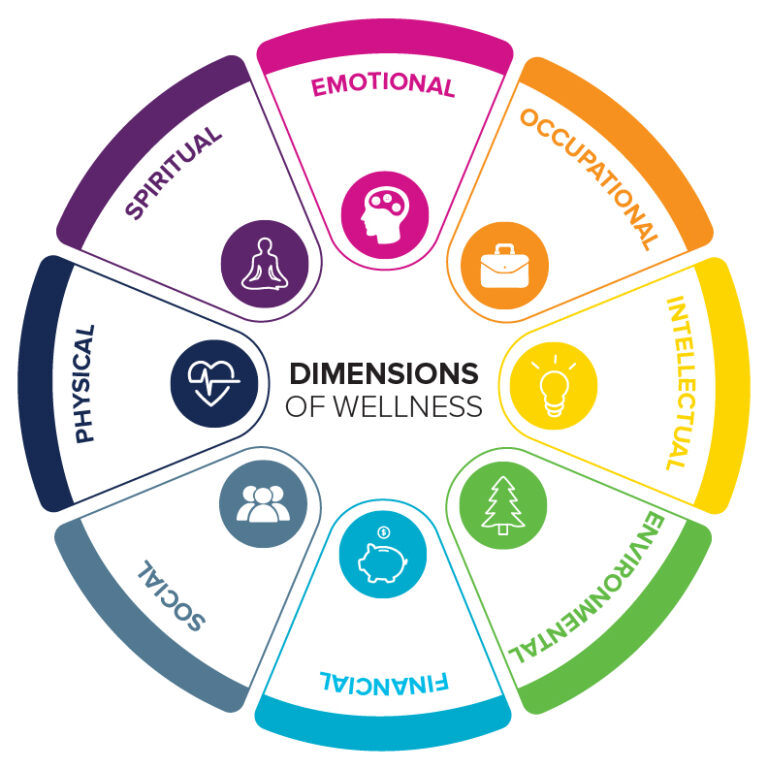Popular Entertainment Venues of the 1980s: The Decade’s Cultural Hotspots
Popular entertainment venues of the 1980s
The 1980s represent a transformative era for entertainment venues across America and globally. As technology evolve and cultural tastes shift, the spaces where people gather for leisure undergo significant changes. These venues not entirely provide entertainment but besides serve as cultural landmarks that define the decade’s social landscape.
The rise of the shopping mall as entertainment hub
May hap no venue fountainhead symbolize 1980s entertainment culture than the shopping mall. These sprawl commercial centers evolve from mere retail spaces into entire fledged entertainment destinations. Food courts, arcade games, and movie theaters transform malls into all day social hubs for teenagers and families similar.
The mall arcade become especially iconic during this period. Games like PAC man, space invaders, and Donkey Kong draw crowds of young people who would spend hours feeding quarters into machines. Major chains like Aladdin’s castle and time out operate hundreds of locations countrywide, mainly in shopping centers.
Beyond arcades, mall feature multiplex cinemas that revolutionize the movie go experience. These venues offer multiple screens under one roof, allow patrons to choose from several films during a single visit. The convenience of shopping, dining, and watch a movie in one location make malls the weekend destination of choice for many Americans.
Nightclubs and dance venues
The 1980s nightclub scene represent a dramatic departure from the disco era that precede it. While disco clubs dominate the late 1970s, the new decade sees the emergence of diverse nightlife options cater to different musical tastes and subcultures.
Mainstream dance clubs
Large commercial nightclubs continue to thrive throughout the 1980s, though their musical focus shift. New wave, synth pop, and early hip hop replace disco as the sounds of choice. Venues like the palladium inNew Yorkk city epitomize the mainstream club experience, feature elaborate light shows, multiple dance floors, and celebrity sightings.
These clubs oft embrace emerge video technology, incorporate MTV style screens and music videos into their environments. Vs ((ideo jockeys ))ecome amp important as djsDJs create the total nightclub experience. The integration of visual media with music reflect the increase influence of television on entertainment culture.
Underground club scene
While commercial venues cater to mainstream tastes, the 1980s besides see the rise of influential underground clubs. These spaces foster experimental music scenes and alternative subcultures. New York’s bacteria and chChicago warehouse become legendary for their contributions to electronic music, with the latter give birth to house music.
In the UK, Manchester’s hacienda pioneer a distinctive acid house sound that would finally evolve into rave culture. These underground venues oftentimes operate in convert industrial spaces, reflect both economic necessity and an aesthetic that reject commercial polish.
Studio 54’s lingering influence
Though studio 54’s heyday occur in the late 1970s, its influence on nightclub culture extend fountainhead into the 1980s. The famous New York venue set a standard for exclusivity and celebrity culture that many later clubs attempt to emulate. Its legacy shape how nightclubs market themselves as destinations for the beautiful and famous.
After change ownership in 1981, studio 54 continue to operate until 1986, though with less cultural impact than during its peak years. Nonetheless, the venue’s emphasis on theatrical environments and cautiously curate guest lists remain influential throughout the decade.

Source: 248am.com
Movie theaters: from singles to multiplexes
The 1980s witness a fundamental transformation in how Americans experience cinema. Traditional single screen theaters progressively give way to multiplex and megalux venues house numerous screens under one roof.
The multiplex revolution
While the first true multiplexes appear in the 1960s, they become the dominant form of movie exhibition during the 1980s. Companies like AMC and general cinema apace expand their multiplex operations, offer audiences unprecedented choice. Kinda than being limit to a single film, patrons could select from several options, make the theater a more flexible entertainment destination.
Multiplexes to transform the economics of film exhibition. Theater operators could expeditiously run multiple films with staggered start times, maximize revenue from concessions and allow for extended operating hours. The physical design of these venues emphasize convenience, with central concession areas serve multiple auditoriums.
Technical innovations
The 1980s besides bring significant improvements to the theatrical view experience. Dolby stereo become standard in many venues, while thanks certification emerge as a mark of superior audio quality. These technological advances complement the blockbuster orieHollywoodood output of the era, with films l” Star Warsrs: the empire strikendorse” ” an” raiders of the lost ark” design to showcase theatrical sound and visual capabilities.
Stadium seating begin appear in some newer theaters, improve sight lines and make the movie go experience more comfortable. This innovation would belated become standard but represent a significant upgrade over the traditional slope floor design that dominate earlier theaters.
Concert venues and arena rock
The 1980s mark the golden age of arena rock, with musical acts routinely fill massive venues for spectacular shows combine music with theatrical elements. Sports arenas and stadiums become primary concert venues, accommodate tens of thousands of fans per show.
The stadium concert experience
Acts like Michael Jackson, Bruce Springsteen, and u2 pioneer progressively elaborate stage productions design for stadium sized audiences. These performances feature massive lighting rigs, video screens, and special effects that transform concerts into multimedia spectacles. The 1985 live aid concert exemplify this trend, with simultaneous performances at Wembley Stadium in London and JFK stadium in Philadelphia reach a global television audience.
Purpose build amphitheaters besides proliferate during this period. Venues like the universal amphitheater in Los Angeles and similar facilities construct by companies like live nation (so nNederland) )ovide outdoor concert experiences with improve acoustics compare to sports stadiums.
Intimate venues and alternative spaces
While arena show dominate mainstream music, smaller venues remain vital to emerge genres and artists. Clubs like BGB in nNew Yorkcontinue nurture punk and new wave act, while the rRoxyin lLos Angelesserve as an important showcase for metal and glam rock bands.
College campuses besides function as significant performance venues, peculiarly for alternative and indie acts that lack major label support. These shows oftentimes take place in student unions or campus auditoriums, provide affordable entertainment for students while give emerge artists access to receptive audiences.
Video arcades
While arcade games appear in shopping malls, dedicated arcade venues represent a distinct entertainment category during the 1980s. These spaces cater specifically to video game enthusiasts, offer a wider selection of games than mall arcades could accommodate.
The golden age of arcades
The early 1980s are wide to consider the golden age of arcade gaming. Revenue from arcade games peak around 1982, with popular titles generate unprecedented income. Games like defender, mPACpac man, aMalagaaga attract players of all ages, while more complex titles like dragon’s lair introduce new technologies lilaser discisc video.
Dedicated arcades typically offer a more immersive environment than mall locations, with darker lighting, specialized seating, and a greater emphasis on gaming culture. These venues oftentimes become social hubs for teenagers, provide a space where skill at popular games confer status and recognition.
Decline and adaptation
The arcade industry experience a significant crash in 1983, coincide with the North American video game console crash. Many standalone arcades close during this period, though the industry partly recovers in subsequent years. Survive arcades oftentimes diversify their offerings, incorporate redemption games( which award tickets exchangeable for prizes) alongside traditional video games.
By the late 1980s, arcades progressively compete with home gaming systems like the Nintendo entertainment system. This competition push arcade manufacturers to develop experiences that couldn’t be replicate at home, include larger cabinets with specialized controls for racing and flight simulation games.

Source: countryparadisepark.com
Theme parks and attractions
The 1980s represent a period of significant evolution for theme parks, with major operators expand their offerings and incorporate new technologies into attractions.
Disney’s innovations
Walt Disney World’s Epcot center open in 1982, introduce a new concept in theme entertainment that combine educational exhibits with traditional rides. The park’s future world section showcase emerge technologies, while world showcase present idealized versions of international cultures.
Disney continue to innovate throughout the decade, opTokyokDisneylandand in 19( ( the firsDisneyey park outside thUnited States) ) and develop more sophisticated attractions incorporate audio animatronic figures and immersive environments. CaptainEOo, a 3d film starMichael Jacksonn, exemplifiedDisneyy’s efforts to incorporate contemporary entertainment figures into their parks.
Regional theme parks
Companies like six flags and kings entertainment operate regional theme parks that provide more affordable alternatives to Disney’s destinations. These parks progressively focus on thrill rides, especially roller coasters, to differentiate themselves from Disney’s more family orient offerings.
Many regional parks form marketing partnerships with cartoon characters and entertainment properties. Six flags feature Warner Bros. Characters like Bugs Bunny, while other parks license properties range from Hanna Barbara cartoons to popular music acts.
Home entertainment revolution
While not physical venues, homes progressively become primary entertainment spaces during the 1980s. This shift essentially changes how people consume media and interact with entertainment.
Video rental stores
May hap the near iconic new retail venue of the 1980s was the video rental store. Blockbuster video, found in 1985, exemplify this business model, though thousands of independent stores precede its emergence. These establishments allow consumers to rent movies for home viewing, dramatically expand access to film content.
Video stores typically organize their inventory by genre, with new releases receive prominent placement near the entrance. The physical layout of these stores influence viewing habits, with customers oftentimes browse shelves for unexpected discoveries. Late fees, a practically malign aspect of the rental experience, provide additional revenue for store operators.
Cable television expansion
Cable television penetration increase dramatically during the 1980s, bring specialized channels into American homes. MTV, launch in 1981, revolutionize music promotion and youth culture. Other specialized channels like HBO, ESPN, and CNN provide content unavailable on broadcast networks.
This expansion of view options contribute to the fragmentation of mass media, allow consumers to select entertainment align with their specific interests kinda than choose among limited broadcast options.
Legacy of 1980s entertainment venues
The entertainment venues of the 1980s leave a lasting impact on American culture. Many physical spaces from this era have disappeared or transform, yet their influence persist in contemporary entertainment experiences.
Shopping malls have decline as retail has shift online, though nostalgic appreciation for mall culture has ggrown Video rental stores have mostly vanished, replace by stream services that offer convenience but lack the social experience of browse physical media. Multiplexes remain dominant in film exhibition, though they nowadays compete with home theaters and streaming platforms.
Possibly virtually importantly, the diversification of entertainment options that begin in the 1980s has accelerated in subsequent decades. The venues that define the era reflect an entertainment landscape in transition — one move from mass media toward progressively personalize experiences. This shiftcontinuese to shape how we interact with entertainment today, eventide as the physical spaces where those interactions occur continue to evolve.



